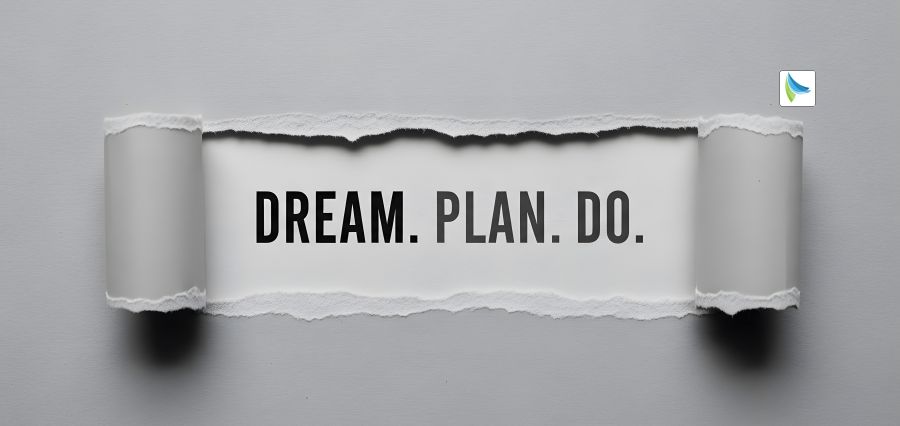In a time of uncertainty, technological disruption, and economic volatility, the old leadership rules are being rewritten. Organizations from all industries are faced with a very complex landscape where responsiveness, innovation, and vision must converge.
Along with the way of transformation, Strategic Design Leadership has become a vital map-one that combines design thinking and business strategy to craft significant and lasting change.
What is Strategic Design Leadership?
Essentially, Strategic Design Leadership is the practice of integrating design as a strategic function within an organization. It transcends how things look or function to overcome problem-solving, user experience, and system thinking. Strategic design leaders don’t merely make things look pretty—they make things function better, more intelligently, and with greater pertinence to human needs and business goals.
They live at the intersection of business savvy, imagination, and technology know-how, leading cross-functional teams through uncertainty with a focus on long-term effect. Particularly during times of uncertainty, this kind of leadership is not merely pertinent—but imperative.
The Need for Strategic Design Leadership in Uncertain Times
Ambiguity dissolves the very basis of strategic planning. Yesterday’s answer will not fix tomorrow’s issue. Customer trends change whimsically. New contenders pop up overnight. In the midst of this turmoil, conventional leadership approaches—often founded on adamant planning and top-down decision-making—can’t handle it.
Here the Strategic Design Leadership provides the welcome relief. By placing empathy, experimentation, and iterative thinking at the center, it keeps the organizations anchored in user needs yet agile enough to make a sharp turn. It enables data-driven risk-taking and builds an environment where innovation is not a buzzword but a habit.
For instance, when the COVID-19 pandemic occurred, design-driven approaches within organizations allowed for changes on a dime—retailers created virtual shopping, schools leveraged dynamic online platforms, and health care organizations used design thinking to improve patient communication. Strategic design leaders were at the center of such changes, pinpointing pain points, co-designing solutions, and navigating their organizations into uncharted territories.
Principles That Drive Strategic Design Leadership
In uncertain circumstances, certain of these principles are the foundation of Strategic Design Leadership. They are:
- Empathy and Human-Centered Thinking
Strategic design leaders are always trying to get at people—customers, employees, partners. By being human-focused, they are most likely to come up with solutions that resonate deeply and solve actual issues, not symptoms.
- Systems Thinking
They gaze beyond individual touchpoints to understand how systems play together. Amidst a world of fine-grained dependencies, having the ability to glimpse the larger universe enables them to foresee unexpected side effects and construct stronger, scalable solutions.
- Experimentation Over Perfection
Instead of holding out for perfection, they promote prototyping, feedback cycles, and speedy iteration. For this mental approach, faster learning and direction adjustment become possible, important in unstable markets.
- Collaborative Leadership
Strategic design leaders are bridge-builders. They dismantle silos by building collaboration across functions—marketing, tech, operations, and finance—so that design decisions are also in sync with overall business strategy.
- Vision with Flexibility
They set direction but have no qualms in re-setting direction as and when the situation demands. This vision and flexibility is especially strong in cultures where change is the only constant.
Building Strategic Design Leadership Within Organizations
Companies that are prepared to harness the power of Strategic Design Leadership need to deliberately rethink their structure and culture. Designers need to get a seat at the leadership table first. Design leaders need to be involved in making important business decisions so that strategy and execution are aligned.
Secondly, there must be investment in design literacy throughout the company. Once teams grasp the importance of design thinking, they are more receptive to other paradigms in solving problems.
Thirdly, creating space for experimentation and failure is highly important. Strategic design excels in learning cultures where failure is a steppingstone, and not an obstacle.
Finally, leadership development initiatives need to shift and integrate design-led thinking as a fundamental skill. Future leaders need to be proficient not only in people and asset leadership but in leading in complexity through empathy, imagination, and system awareness.
The Human Element of Strategic Design Leadership
One of the deepest things about Strategic Design Leadership is that it is human by nature. Human beings desire clarity, connection, and confidence when in crisis or under attack. Strategic design leaders provide all three, albeit not by issuing directives, but by storytelling, collaboration, and empowering.
They are leaders who lead through questions instead of answers. They ask more questioning questions instead of thinking that they have all the answers. They establish trust not by trying to control people but by being open and having a shared sense of purpose. By doing so, they not only drive greater performance in their organizations but also the health and well-being of those in them.
Final Thoughts
The world is not becoming less complex. As we descend further into the age of AI, global warming, and economic disruption, companies will encounter only uncertain ground ahead. Strategic Design Leadership is no longer on the agenda it’s a necessity.
It’s the type of leadership that not only survives uncertainty but converts it into opportunity. It drives teams to design boldly, respond quickly, and connect deeply with the emerging needs of the people they serve. In the presence of uncertainty, Strategic Design Leadership becomes the beacon that shines forward—not only for companies, but for society.












